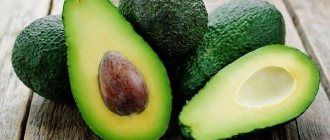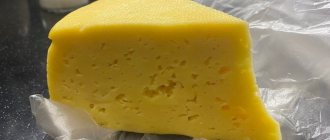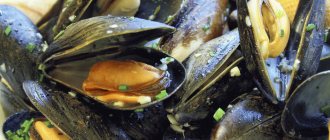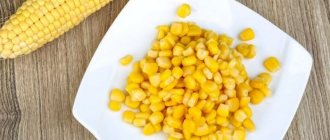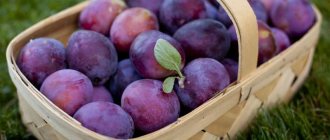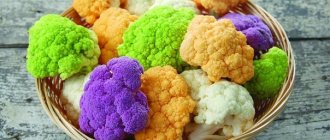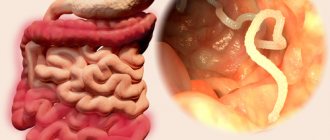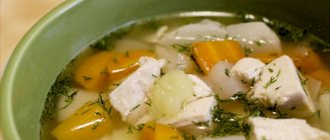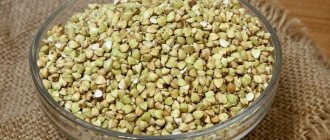To cure a patient of pancreatitis, along with taking medications, it is also necessary to follow the diet prescribed by the doctor, in which a special place is given to mashed potatoes. Potatoes for pancreatitis are useful both as a dietary product and as a product with medicinal properties. The vegetable has long been used in folk medicine. Despite this, it should be included in the diet for pancreatitis only on the recommendation of the attending physician. Potatoes for pancreatitis are useful both as a dietary product and as a product with medicinal properties.
Is it possible to eat potatoes if you have pancreatitis?
Pancreatitis is commonly called inflammation of the pancreas (PG), in which the activity of this organ is disrupted. Many people don’t even think about how important the pancreas is for the entire body as a whole. It performs an important function, which is to produce enzymes necessary for the digestion of food and the further absorption of beneficial substances that come with it. Without pancreatic secretion, the stomach and intestines will not be able to work as usual: the inability to break down the food bolus sooner or later leads to the fact that these organs begin to collapse under the influence of hydrochloric acid. About the same thing happens with the pancreas: gradually it begins to self-digest.
In this regard, it is very important to provide proper nutrition, which will help restore the functionality of the organ, and not its further destruction. The diet plan prescribed for pancreatitis is based only on those dishes that do not require increased production of enzymes and do not overload the pancreas and the entire gastrointestinal tract as a whole. During the acute phase of the disease, the patient is forced to fast for the first few days; only after the crisis is over, easily digestible foods are gradually added to the diet, and along with them potatoes - the product is allowed to be consumed literally immediately after the symptoms of the disease have subsided. This root vegetable has not only nutritional but also medicinal properties. An interesting fact is that nutritionists allow patients with pancreatitis to eat potatoes not only boiled, but even raw, and, in addition, recommend drinking raw potato juice, since, according to experts, it contributes to the speedy recovery of the pancreas.
How to drink potato juice correctly for pancreatitis
In the treatment of pancreatitis and diseases of the gastrointestinal tract, juice from raw potatoes is often used. When treating pancreatitis with potato juice, you need to become familiar with certain rules of therapy.
The course of treatment is recommended to be carried out until February, since solanine, a substance that can harm the body, accumulates in potato tubers by spring. The presence of solanine is manifested by the coloring of the root vegetable green. The best period for therapy using potato juice is August. Preference should be given to pink and red potatoes.
Using raw potato juice helps:
- Relieve inflammation from the pancreas;
- Eliminate spasms, relax the smooth muscles of the pancreas, relieve pain;
- Accelerate the wound healing process;
- Envelop the food bolus and reduce its aggressive effect on the diseased organ;
- Activate the production of enzymes that ensure normal digestion.
Treating pancreatitis with potato juice is not allowed during the period of exacerbation of the disease, since a drink made from raw potatoes contains a lot of ascorbic acid and can cause bloating and fermentation. Potato juice can cause stool problems in the form of diarrhea, which will aggravate the patient’s condition during the acute phase of pancreatitis.
It is important to take into account the fact that all the healing properties of raw potatoes are lost 15 minutes after preparing the juice. That is why you need to prepare potato juice in single servings.
Juice is prepared from washed and peeled tubers by passing them through a juicer. You can prepare the juice by grating the potatoes on a fine grater and squeezing the resulting mass through cheesecloth. The juice should be shaken well before use.
The daily rate of potato juice should be 100 – 200 ml. You need to take the juice twice a day, 30 minutes before meals, 50-100 ml. After taking it, it is recommended to take a position lying on one side, and then turn to the other. You cannot add salt, sugar or honey to the juice. The course of treatment is 14 days, after which a break is taken for a week and, if necessary, the course is repeated.
Decoding the diagnosis
Both diseases are characterized by severe pain, so it is difficult not to pay attention to it. Do not try to treat yourself or suppress symptoms with analgesics. Pancreatitis is diagnosed when the pancreas becomes inflamed. Cholecystitis is a dysfunction of the bile ducts. In this case, bile does not enter the intestines, but accumulates in the bladder. Its walls stretch, which causes pain. However, swelling is not the only problem. Bile does not enter the intestines and cannot participate in digestion, which leads to bloating and other unpleasant consequences.
The benefits and harms of potatoes for the body
Dishes made from potatoes are not only tasty, but also healthy, because potatoes contain many vitamins and other substances valuable to the human body:
- Vitamins C, H, E and almost all B vitamins;
- Microelements: magnesium, potassium, iodine, nickel, copper, cobalt, manganese, silicon, iron, chlorine, bromine, zinc, phosphorus, folic acid; Most of all, potatoes contain potassium (up to 565 mg per 100 g of product), which removes excess fluid from the body, and therefore can relieve swelling from the inflamed pancreas;
- Easily digestible vegetable protein (about 2.5%);
- Simple carbohydrates;
- A small content of soft fiber (only 1.4 g), which is not capable of injuring the mucous membrane or having a strong effect on intestinal motility, which is why potato dishes do not aggravate pancreatic diarrhea.
It is noteworthy that potatoes do not contain fats, essential oils and acids, which is why the product does not irritate the digestive tract, thereby not provoking the occurrence of various undesirable reactions of the body.
Other beneficial properties of the root vegetable include:
- Ensuring an enveloping effect due to the presence of starch in the composition is necessary to protect the mucous membranes from the negative effects of external factors; in addition, thanks to this feature, the inflammatory process decreases, erosive and ulcerative defects heal, and pain, nausea, heartburn and belching gradually disappear;
- Elimination of constipation and normalization of intestinal motility, which occurs due to the delicate fiber of potatoes present in it;
- Nutrition of the body with protein, which is aimed at accelerating the processes of regeneration of damaged cellular structures of the pancreas;
- Positive effect on the heart muscle, in particular on blood pressure and myocardial contractility, which is ensured by the high concentration of potassium in the product;
- Reducing blood cholesterol levels, as well as the concentration of hydrochloric acid in gastric juice;
- Relief of headaches;
- Elimination of heartburn and nausea, burning sensation localized in the esophagus.
Despite the wide range of positive qualities, potatoes can also cause harm to the body. This applies to old stale tubers that have been stored for more than 4 months. Such root vegetables should not be consumed either raw or boiled, since such food can cause poisoning and the occurrence of all its characteristic symptoms: diarrhea, nausea and vomiting, dizziness, severe pain in the abdominal area. Another sign of bad potatoes is the presence of green areas under the skin. They can usually be found while peeling potatoes. This phenomenon is a clear sign that the root crop has been in the sun for too long, and therefore, under the influence of ultraviolet rays, solanine has formed in it, which often provokes intoxication of the body.
General principles of diet for pancreatitis
Pancreatitis can manifest spontaneously and cause great discomfort to a person (acute form) or have a hidden and sluggish nature (chronic stage). The cases differ from each other not only in clinical symptoms, but also in dietary characteristics.
In acute pancreatitis, it is recommended to fast for several days. This is necessary in order to provide the organ with a state of rest and reduce the source of inflammation in the tissues.
You can start eating on the 4th day after the acute symptoms of the disease (severe pain, attacks of nausea, gagging and profuse diarrhea) have subsided. With chronic pancreatitis, it is important to adhere to a diet. This will help prevent exacerbations and achieve long-term remission.
In addition, you need to adhere to the general principles of nutrition:
- Steam heat treatment of food. It will help preserve all the useful components of food.
- Fractional meals (up to 5 times a day in small doses) - reduces the load on a weakened digestive system.
- It is important to eat food warm.
- Before eating, food must be crushed to a liquid consistency.
It is important to avoid snacking throughout the day. The main meal is enough. It is better to drink more warm tea or water. This will help remove toxins from the body and reduce discomfort in the abdominal area.
When can you eat potatoes if you have inflammation of the pancreas?
Nutritionists and gastroenterologists are unanimous on this issue: potatoes can be consumed during any period of the disease: be it the acute phase or remission. Due to the fact that the root vegetable contains very little fiber, dishes prepared from it do not injure the mucous membranes of the gastrointestinal tract and do not affect intestinal motility. Accordingly, manifestations such as diarrhea and nausea, which usually accompany inflammation of the pancreas, will not intensify and thereby worsen the patient’s condition. Also, a huge contribution to the normalization of pancreatic activity is made by the vegetable protein contained in potatoes, since it is it that promotes the regeneration processes necessary to restore damaged organ tissue.
Of course, there are a number of rules regarding the use of this product both during the period of exacerbation and during the remission stage. Not all dishes prepared with potatoes will be beneficial for people suffering from pancreatitis, so before you arrange a gastronomic variety, you should familiarize yourself with some of the nuances - this will help avoid unwanted reactions of the body and relapse of the disease.
Potatoes in the acute stage of pancreatitis
People who have experienced exacerbation of pancreatitis more than once already know that in times of crisis the first emergency measure is hunger. For several days, the patient is prohibited from eating not only potatoes, but also any other foods; only clean drinking water or chamomile/rosehip decoction is allowed, but in small quantities.
Currently reading: Symptoms of pancreatitis in women and treatment at home
Fasting at this stage is not accidental. During the inflammatory process of the pancreas, the outflow into the duodenum of those enzymes that the pancreas produces slows down. As a result, they begin to work inside the organ itself, literally digesting it and thereby aggravating inflammation. It is for this reason that the only thing the gland needs in the first few days of an exacerbation is to ensure rest, that is, hunger and rest.
After the crisis is over, you can gradually introduce easily digestible foods and dishes into your diet (slimy porridges, soups, vegetable stews), which will not create a load on the pancreas, causing stimulation of its enzymes. On the 3-4th day it is permissible to eat potatoes, which must be served only boiled, mashed and soft. Mashed potatoes with water or steam pudding made from this root vegetable are ideal. It is not recommended to salt potatoes or add butter to them - this can be allowed, but a little later, when the condition of the pancreas has stabilized.
Another rule that must be followed to maintain the rest of the organ is eating warm food. Therefore, after the puree is prepared, you should not rush to eat it until it has cooled down. Also, the first dose should be small in volume: no more than one tablespoon. If the body reacts normally to mashed potatoes, the portion can be gradually increased until it reaches 100 g.
Potatoes and chronic pancreatitis
With the onset of the resting stage, the portion of potatoes can be increased to 300 g, and variety can also be added to the patient’s menu. You can make not only mashed potatoes from potatoes, but also casseroles, soups, vegetable stews, root vegetables can be stewed and baked, and added boiled to salads and vinaigrettes. In addition, it is no longer necessary to grind and puree potatoes; you should not abstain from butter either: a small portion of this product in puree, provided that the disease is in stable remission, will not cause any harm to the body.
But excessively adding salt and spices to potato dishes clearly will not bring any benefit, exactly to the same extent as french fries or just home-made fried potatoes. These dishes are prepared using large amounts of vegetable oil, resulting in very oily potatoes. When eating such food, the pancreas experiences severe stress, which can lead to repeated failure of its functioning.
Is it possible or not?
Potatoes are a unique vegetable that is present in the diet of both healthy people and people who have problems with the digestive tract. The vegetable is easily digested and absorbed by the body; mashed potatoes coat the inflamed mucous membrane and help speed up its recovery. Potatoes contain a small amount of fiber, so they do not have a negative effect on the digestive system and do not affect intestinal motility.
Eating mashed potatoes during the treatment of pancreatitis is necessary because this dish is nutritious and easily digestible, it replenishes the body with the vitamins, micro- and macroelements necessary for full functioning, which is very important during a strict diet.
The root vegetable can be introduced into the diet of a patient with pancreatitis at different phases of the disease. The vegetable is used for acute pancreatitis, immediately after the attack has stopped, during the chronic stage of inflammation of the pancreas, as well as during the period of stable remission.
When including potatoes in the diet of a patient with pancreatitis, it is necessary to take into account that the daily norm of the root vegetable should be no more than 2 potatoes (200 g) in the acute phase and 3 - 4 potatoes (no more than 300 g) in stable remission.
Two problems - one solution
Nutritionists and gastroenterologists recommend using potato juice for pancreatitis and cholecystitis. The fact is that often these two ailments occur simultaneously. There are many reasons for this. Let's name the most common ones:
- Poor nutrition. This is the predominance of spicy and hot dishes, fast food and smoked foods in the diet. A lack of fiber-rich, vitamin-rich foods is also detrimental to your health.
- Intoxication of the body. This may include alcohol abuse and drug therapy, as well as serious metabolic disorders.
- Physical inactivity. It has long been established that there is a direct connection between physical activity and the functioning of our internal organs. Modern man has a serious imbalance. He eats a lot of high-calorie foods and practically does not use the resulting energy, spending his free time in front of the TV.
If you sit for 6 or more hours a day, you are already at risk. Potato juice for pancreatitis and cholecystitis is the best way to prevent exacerbations.
Potatoes for pancreatitis and cholecystitis
Eating potatoes has a positive effect on the body not only during inflammation of the pancreas, but also during the inflammatory process of the gallbladder. These two organs are closely interconnected. Despite the fact that the gallbladder does not take part in the production of bile, it plays an important role in the digestion process. Accumulating concentrated bile coming from the pancreas, the gallbladder gradually releases it into the small intestine, where it combines with unconcentrated liver bile, thereby beginning the activity of digesting food.
Both diseases require adherence to an identical diet, in which a special place is given to potatoes. This product is allowed for consumption in any form: boiled, baked, stewed. With its help, you can prepare a wide variety of dishes that will not cause harm to damaged organs. These can be casseroles, puddings, salads, soups, dumplings, zrazy. The ideal and perhaps most popular option is mashed potatoes. Such a dish can be introduced into the diet even after the end of the crisis, that is, those first days during which the patient needs to fast. Puree prepared with water does not overload the digestive system and does not stimulate enzymatic activity, and, in addition, removes toxins, waste and excess bile from the body.
Just like with pancreatitis, potatoes with inflammation of the gallbladder should not be fried, excessively salted, or added with spices, garlic, pepper and other similar things. It is not recommended to overeat it; portions should be small and meals should be frequent.
Is it possible to eat potatoes in large quantities?
Any product in excess can harm even a healthy body. Potatoes are no exception. In case of acute pancreatitis, the daily volume of potatoes should be no more than 150–200 g. When a chronic disease goes into remission, you are allowed to eat no more than 300 g of this vegetable per day. If you eat potato dishes daily and in large portions, this can negatively affect the condition of the pancreas, and there is also a danger of gaining excess weight and developing diabetes.
The use of potatoes for pancreatitis is permitted by gastroenterologists and nutritionists. In case of acute inflammatory process, you can only eat puree prepared in water. After achieving stable remission, the patient’s diet becomes more varied. Many different dishes are prepared from potatoes using heat treatment methods such as boiling, stewing, baking, and steaming.
How to choose
The most useful substances are found in small and medium-sized tubers. The maturity of the potato depends on the thickness of the peel: the thicker it is, the longer the vegetables can be stored.
It is not recommended to purchase sprouted and greened tubers, which are saturated with harmful alkaloids.
This product can cause poisoning. If small holes are visible on the tubers, it means the potatoes are damaged by wireworms. The chafer leaves a mark in the form of a deep groove.
Traces in the form of brown spots indicate damage to the vegetable by scab. If water oozes out of the tuber when you cut it with a fingernail, then nitrates were used during cultivation. Potatoes of proper quality should be firm, with smooth, intact skin. The best varieties, in which the maximum content of useful substances was found, are vegetables that have a bright color: pink, red, purple and other shades characteristic of many selected fruits.
Is it allowed to eat potatoes in large quantities?
The opinion of nutritionists on this issue is clear. Consumption of any product in excessive quantities, no matter how beneficial it may be, is unacceptable. This can lead not only to an overabundance of specific vitamins and minerals, but also to harm to the body. In addition, overeating in general and pancreatitis are incompatible things. Inflammation of the pancreas, just like any other disease of the digestive system, requires compliance with proper nutrition and its principles. We are talking not only about the components of the diet itself, but also about the principles of food intake. The main one is to prevent overeating; for this purpose, the patient must organize six meals a day, but with small portions.
As for potatoes, its daily norm for people suffering from pancreatic inflammation is 100 g - in the first days after the crisis, 200-300 g (2-3 root vegetables) - during the acute phase or exacerbation and 300 g - at the resting stage with condition of normal health of the patient.
Potatoes in the acute stage of pancreatitis
In case of exacerbation of inflammatory disease of the pancreas during the first 3 days, the patient, in addition to following all recommendations for drug treatment, is recommended to fast. At this stage, you can only drink still water and rosehip decoction. After 3 days of fasting, slimy soups, porridges, and jelly are added to the diet. At the same time, you can start eating liquid vegetable purees from zucchini, carrots and potatoes, and steamed vegetable pudding.
Start eating any new dish with small portions - no more than 1 spoon. If the potato dish does not provoke pain, nausea or stool disturbances do not appear, then gradually the volume of mashed potatoes is increased to 100 g.
Are fried potatoes allowed?
People who are forced to adhere to a diet due to pancreatic disease, of course, sometimes want to allow themselves to relax and eat something from the dishes that are more familiar to us. It can be anything: fried chops or chicken legs, eggs or any other food cooked in a frying pan, as well as everyone's favorite fried potatoes. There are a lot of options, but whether such dishes are healthy is a rhetorical question. Their implementation requires the use of vegetable oil, which, when exposed to high temperatures, saturates the products with harmful substances. In addition, everything that has been processed by frying has an irritating effect on the gastrointestinal mucosa and is very difficult to digest. The breakdown of this food requires a fairly large amount of enzymes, which is why the pancreas begins to actively produce them. In the conditions of the inflammatory process occurring in it, such a phenomenon will become extremely undesirable, it will only aggravate the course of the disease and will most likely provoke a relapse.
Raw potatoes in the diet for pancreatitis
Raw potatoes are an excellent alternative to boiled potatoes, since their juice has a beneficial effect on the entire digestive system. For such purposes, it is necessary to use only fresh root vegetables - this guarantees that they will not contain solanine, which accumulates as the potatoes are stored. The substance is formed in root vegetables that are more than 4 months old; potatoes that have been in the sun for a long time will also be “rich” in solanine. The presence of greenery is a sign of a harmful component contained in potatoes.
Due to this feature, the best time to eat raw root vegetables is from the end of summer, when the entire crop is harvested, until February: it is during this time that potatoes not only retain their beneficial qualities, but also do not have time to accumulate harmful components, which may adversely affect human health.
Currently reading: Medicines for pancreatitis of the pancreas: names, instructions and reviews
The benefits of raw potatoes and the juice contained in them are as follows:
- Rapid reduction of the inflammatory process occurring in the pancreas;
- Providing a wound-healing effect on the mucous membranes of the esophagus, stomach and intestines;
- Enveloping the walls of the gastrointestinal tract;
- Elimination of pain, relaxation of smooth muscles;
- Stimulation of enzymatic activity, which is necessary for normal digestion of food.
Home treatment with raw potatoes should not be started during the period of exacerbation of the disease, since the juice of this root vegetable contains quite a lot of ascorbic acid, which provokes fermentation in the stomach and a feeling of bloating. In addition, potato juice has a laxative effect, which is extremely undesirable for inflammation of the pancreas, because this disease itself is often accompanied by diarrhea.
Potatoes and chronic pancreatitis
If a diagnosis of chronic pancreatitis has been established, potatoes are allowed for consumption, but only in the form of properly prepared dishes. Excluded from the menu are fried potatoes, french fries, crispy baked vegetables, chips and other vegetable dishes prepared using hot seasonings, garlic, pepper, and large amounts of salt that are harmful to the pancreas.
Judging by patient reviews, potatoes can be consumed even raw (usually in the form of juice), unlike other vegetables. Potato juice helps cure many gastrointestinal diseases.
Choosing the healthiest root vegetables
The course of treatment is best planned for autumn or early winter. This is due to the fact that it is at this time of year that it is easy to get fresh potatoes. It will be possible to repeat the course in early spring. Later, it is difficult to obtain fruits that have medicinal properties. Conduct an external inspection of the tubers. Immediately remove old, green and spoiled ones to the side; you will not get any benefit from them. This rule also applies to sprouted fruits. For pancreatitis, it is best to choose pink or red potato varieties, as they contain the maximum amount of beneficial components for the whole body.
Treatment with potato juice
Drinking potato juice is a fairly common option for home treatment of the digestive system, including the pancreas. It is based on several rules, failure to comply with which may not lead to the desired result or, much worse, cause harm to the body.
- It is necessary to take raw potato juice orally only in fresh form. This is explained by the fact that the squeezed liquid loses its beneficial properties after 10-15 minutes, and therefore its use becomes a useless exercise. Accordingly, you should not prepare such a drink in large quantities, because it is no longer possible to store it and use it, for example, in the evening or the next day.
- This drink should not be consumed by people with high stomach acidity.
- The ideal option is to use a juicer to obtain potato juice, but such a drink can be prepared without it. Using a fine grater, the root vegetable should be crushed and then squeezed through a bandage or gauze.
- Before drinking, potato juice should be shaken thoroughly.
The regimen for taking this drink is simple. Its amount per day should not exceed 100-200 ml, and this volume must be divided into two times. You need to drink the juice an hour and a half before meals, that is, on an empty stomach, 50-100 ml. After taking it, it is recommended to lie on each side alternately for several minutes. Of course, potato juice does not have a very pleasant taste, but you cannot add sugar, honey or anything else to it, but mixing it with carrot juice in a 1:1 ratio to enhance the effect is quite possible. The optimal course of home treatment should be 14 days followed by a break of 7-10 days. If the body reacts normally, the scheme can be repeated.
Cocktail “lightness of a princess”. cucumber water
cucumbers
The “Lightness of the Princess” cocktail quickly dealt with inflammation, relieved pain, digestive problems and swelling. I began to feel more energetic and even younger.
To prepare the cocktail, you need to take 2 large cucumbers, peel them and squeeze out the juice. Finely chop the dill and parsley, take 3 tbsp. spoons of each, mix with cucumber juice and beat into a paste with a mixer. Add 1 liter of still mineral water to the mixture. Drink everything during the day.
Take 1/2 or a whole glass 20 minutes before meals, and if the cocktail helps cope with the feeling of hunger, it is better to abstain from food altogether. I drank it for a month in a course - a week after a week.”
Cucumber water (and there is 95% of it in the vegetable) is a natural adsorbent that can break down poisons and toxins. Cucumber fiber (water-soluble) also absorbs poisons accumulated in the intestines quite well, increasing the detoxifying properties of the juice. And potassium, which gives a diuretic effect, helps remove them from the body through the kidneys and eliminates swelling.
Due to the content of an insulin-like substance, cucumber juice helps normalize blood sugar and prevents the conversion of carbohydrates into fats, so the vegetable is actively used to combat diabetes.
It is also effective against gland cancer: the lignans it contains can fight the emergence and development of tumors, including cancerous ones. About the profile properties of vitamin C in cucumber and herbs, as well as beta-carotene, which is abundant in parsley.
The strong healing effect of parsley for pancreatitis is also due to its high content of glycosides, vitamins and oils, which help stimulate pancreatic secretion and have anti-inflammatory and analgesic effects.
Dill essential oil contains apiol, a powerful antispasmodic . The oil has a bactericidal, antiviral and antifungal effect. Chlorophyll, contained in both plants, also actively supports the gland, helping to relieve inflammation.
- Cucumber juice is prohibited in case of exacerbation of gastritis, gastric ulcer and duodenal ulcer with high acidity. It should be used with caution if there are stones in any organ; you should start with small portions to avoid too drastic a reaction.
- Parsley is contraindicated for oxaluria, acute nephritis and during pregnancy.
- Dill should be used with great caution and in small doses for hypotension.
Treatment with raw potato tubers
Another unconventional method of treating pancreatitis is eating raw potatoes. All you need to do is grind it with a grater, and then consume the resulting pulp in a volume of 20-30 g 30 minutes before meals. Since during inflammation of the pancreas it is very important not to harm the body, any of the products, especially in their raw form, should be introduced into the diet gradually. To do this, you need to start with a small portion, but over time the dosage must be increased to 2-3 tablespoons. In addition, the root vegetable does not have a very pleasant taste, so starting to take it with a minimum amount will work to your advantage: this way adaptation will take place easily and unnoticed.
Despite all the positive qualities of this technique, there are some contraindications:
- Potato juice is prohibited for people suffering from gastritis with high acidity;
- Raw root vegetables, as well as juice from them, are unacceptable for consumption by people with obesity or severe diabetes.
It should also be borne in mind that such a natural drink can negatively affect the condition of tooth enamel, so people with sensitive tooth surfaces should probably refuse this type of treatment.
Fresh potato juice
Potato
“Wash the potatoes (preferably pink or red varieties, strong, without dark spots) with a brush, remove the eyes, but do not cut off the skin. The juice should be squeezed out immediately before use, allowing it to sit for only a minute so that it does not have time to darken. Keep in mind, after 10 minutes it will lose its healing properties!
You need to drink a glass of juice 30 minutes before breakfast, then lie down for a while and you can eat. Drink for 2 weeks, break for 1 week, and repeat the course (it is advisable to take 4 such courses to get the effect). Or drink the juice immediately before meals, 1/3-2/3 cup (2 weeks, then a break of 10 days, and repeat the course). You can’t add salt and sugar “for taste!”
To reduce swelling of the pancreas, it is important to remove excess fluid from the body. Potassium, contained in large quantities in potatoes, copes with this best, preventing the appearance of edema.
Fresh potato juice has a balanced composition of nutrients and is widely used to treat digestive organs, as it can suppress the production of acid and enzymes in the stomach. Potato carbohydrates are perfectly absorbed by the body, especially if the juice is squeezed from root vegetables with peel. With pancreatitis, the juice helps restore the functions of the pancreas and, accordingly, normalizes the level of glucose in the blood.
Pancreas cleansing
The starch film remaining on the mucous walls of the stomach performs a protective function, providing an enveloping, wound-healing and antispasmodic effect, soothes and relieves inflammation. This helps to cope with gastritis, which very often provokes inflammation of the pancreas.
Another important medicinal property of potato juice - helping with cancer - was discovered recently and is explained by the presence in it of a large number of biologically active substances that have a detrimental effect on nascent cancer cells.
For prevention, it is enough to drink 100 ml of juice before meals.
- In the acute stage of pancreatitis and in severe diabetes, potato juice is prohibited! When treating chronic pancreatitis, it is advisable to use it at the end of the rehabilitation phase or during the period of remission. But juice can cause nausea, so the first use should start not with a glass, but with a small portion.
- Other contraindications: low acidity of gastric juice, severe obesity, chronic pathologies of the urinary system, tendency to constipation or diarrhea, increased gas formation.
It is better to treat with potato juice in August - October, when the tubers contain the greatest amount of useful substances. Potatoes preserved until February can cause more harm due to the gradual accumulation of the harmful substance solanine in them. And one more thing: when treating with potato juice, experts recommend abstaining from meat and fish, replacing them with low-fat cottage cheese, low-fat sour cream or milk.
Treatment course
Tune in immediately for a long time. Tablets give faster results, but have more side effects. However, the final choice must be made by the attending physician. It is very good if in your case only potato juice is prescribed for pancreatitis and cholecystitis. We will now look at how to drink it. Be sure to prepare fresh ingredients every morning. Even more than that, finish all your chores first, and then start chopping the potatoes. Be sure to consume the drink within 10 minutes. As soon as a starch precipitate begins to form and the juice itself darkens, the beneficial properties become lost. Fresh raw materials are always light.
Recipes using potatoes
There are a lot of options for preparing delicious and healthy potato dishes. It can not only be boiled, baked or stewed, but also used to make tender pudding, casseroles, purees, zrazy, soup and various salads. Experts recommend eating any of these dishes exclusively warm, since excessively hot food negatively affects the condition of the pancreas and can cause a relapse of the disease.
Root vegetables must be fresh, not green, and without traces of mold or rot. To prevent potatoes from spoiling, they must be kept correctly: in a dark, dry and cool place. It is also worth considering that it is best to use young potatoes, because they are more valuable in quality than those that have been stored for more than 2-3 months.
Boiled potatoes
In this form, potatoes are present on every table with enviable regularity. This is perhaps the easiest way to prepare this product.
The process of boiling root vegetables is quite simple. For one serving you will need 2-3 potatoes (the number depends on the size of the tubers). An interesting fact is that potatoes should be boiled directly in the skins, because this is how they retain their vitamins and various beneficial properties to a greater extent. Next, fill the potatoes with water, and the container with these contents must be put on fire. People suffering from inflammation of the pancreas are not recommended to add salt to potatoes while boiling them, so after about 30 minutes you just need to remove the pan from the stove and drain the water from it. The last stage is peeling the root vegetables. You can serve potatoes as a side dish for lean fish or meat.
Baked potato
In order to provide the patient with gastronomic variety, potatoes can be baked for him. However, it should be remembered that in this form it can only be given during a period of stable remission of the disease, when symptoms such as pain, nausea, vomiting and diarrhea are absent. Ingredients we need: potatoes, olive or regular sunflower oil, any greens.
First of all, you need to thoroughly rinse the root vegetables, and then, if they are large enough, cut them in half. Each potato must be greased with vegetable oil, then wrapped in foil and placed on a baking sheet. In the meantime, you should prepare the oven: you need to preheat it to 180-200 C, and then put a baking sheet with potatoes in it. The time it takes to complete this dish is only half an hour. However, before turning off the heat, you should check the readiness of the potatoes - you can pierce them with a toothpick, or, carefully opening the foil, with a knife. This dish should be served cleaned of foil paper: the potatoes can be cut and additionally garnished with finely chopped herbs.
Potato zrazy with meat
Essentially, they are potato pies with meat filling. Unlike yeast baked goods, they are very easy to prepare, as they do not require much time or any special effort.
Required ingredients: potatoes, chicken breast or fillet, one egg, onion, herbs, a small amount of flour, vegetable oil.
First, you need to complete the base: wash and peel the potatoes, and then crush them until you get a homogeneous and soft-consistency gruel. After salting the puree and adding egg and flour to it, mix everything. Next, you need to deal with the meat: the chicken breast must be chopped using a meat grinder, chopped onions and herbs should be added to the minced meat. The next stage is the formation of the flatbreads themselves: having rolled a small ball from the base, we make a “pancake” out of it, into which you need to place the minced meat. Having closed the edges and thereby obtaining a kind of pie, place it on a baking sheet greased with oil. We do the same with the rest of the flatbreads. In an oven preheated to 150 C, bake the dish for at least 40 minutes.
Currently reading: What is biliary pancreatitis - symptoms, treatment and reviews
Mashed potatoes
The most favorite dish of both adults and children is mashed potatoes - potatoes crushed to a pasty state. You need to prepare it as follows:
- Wash and peel the root vegetables, place them in a saucepan and cover with water;
- Bring to a boil and add a little salt, continue cooking over medium heat;
- After 30 minutes, check the readiness of the potatoes; this can be done using a toothpick or fork;
- Pour a small amount of water from the pan into a cup and mash the potatoes;
- When chopping potatoes, you need to constantly add the drained liquid to it and do this until the required consistency is obtained.
At the stage of remission, it is allowed to add a little butter to mashed potatoes, but during an exacerbation such pleasure is unacceptable, in addition, salt is prohibited.
Potato dumplings
You can diversify the patient’s diet with more interesting dishes, for example, potato dumplings. Surely many people are hearing about them for the first time, and have never even tried cooking them. But in fact, there is nothing complicated about this, the main thing is not to deviate from the points of the recipe, and then the dumplings will turn out tender and not overcooked.
Products we will need:
- 5 potatoes;
- 1 egg;
- 70 g flour;
- One small onion;
- A little salt.
To begin with, you should boil the potatoes according to the above scheme. After making a puree from it, add the egg, flour and salt to the mixture, then mix everything thoroughly. The finished dough needs to be rolled out into a sausage, so that it does not stick to your hands, its surface can be lightly sprinkled with flour. The resulting product must be divided into small pieces, and then placed in boiling water, where they should spend literally a few minutes. Don’t forget about the onion: it needs to be chopped and fried; the resulting frying can be used as a gravy for potato dumplings.
Vegetable salad
There are quite a lot of salad recipes that involve the use of boiled potatoes as one of the ingredients. However, for pancreatitis, not all of them are equally permitted, so let’s consider the most well-known version, according to which you can prepare not only a tasty, but also a healthy salad that cannot negatively affect the gastrointestinal tract and a weakened pancreas.
Every housewife will have the vegetables needed to make this dish. These are beets and carrots - one each, 3 potatoes, half an onion, and a small amount of sour cream - about 10 g. All root vegetables must be boiled, peeled and chopped using a grater. The onion should be finely chopped, but first scald and squeeze. After mixing and salting the products, season them with sour cream. Salad ready.
Chicken soup
First courses should be present in every person’s diet every day, especially if we are talking about those who suffer from inflammation of the pancreas. Vegetable soups, as well as soups prepared with meat broth, are allowed for consumption. However, here you need to be guided by the main rule: using the first broth to prepare a liquid dish is strictly prohibited, because soup on such a basis will turn out to be excessively fatty and rich, and, therefore, it will create a strong load on the pancreas. It is for this reason that only the second broth can be used.
First you need to prepare all the necessary ingredients: approximately 400 g of chicken breast or fillet, 2-3 potatoes, carrots and onions, a quarter cup of vermicelli (cereals will also do). The washed meat should be placed in a pan, then filled with cold water and put on fire. After the contents begin to boil, the water must be drained and new water must be added to the container. After 30 minutes, the meat piece is removed and finely chopped; you can also use a meat grinder. Next, you should add prepared vegetables to the broth, and after 10-15 minutes - vermicelli and boiled meat. After another 10 minutes, the soup can be considered ready; before serving, it is recommended to decorate it with herbs, and you can add a small amount of sour cream.
Fish casserole with potatoes
This is a rather unusual dish that combines the qualities of both a side dish and meat. It can replace a full lunch or dinner, and it is prepared like this:
- 150-180 g of cod fillet must be boiled, then minced using a meat grinder, salt and add a small amount of butter (5 g is enough);
- Boil the potatoes and mash them, add one egg and about 40 g of milk, after which the resulting mass must be divided into two parts;
- First place one part in a special baking dish, then the boiled fish, and finally cover these two layers with the second part of the potato base;
- Since both potatoes and fish are used already cooked, boiled, the dish does not require too much time: it only takes 10 minutes to get a tasty and healthy dinner.
Such a universal product as potatoes once again proves that dietary food can be not only healthy, but also tasty and varied. Due to the possibility of widespread use of this root vegetable in the culinary field, the menu of people suffering from pancreatitis can become attractive and varied, you just need to show desire and a little imagination.
Recipes
Introducing potatoes into the diet of a patient with pancreatitis allows you to diversify the menu and make eating not only an obligation. You can prepare a lot of tasty and healthy dishes from potatoes. The vegetable should be consumed boiled, stewed, or baked. Fried potatoes should be excluded from the diet, replacing it with potato casserole with meat, mashed potatoes, zrazy, and soups. All cooked food should be taken warm.
To prepare dishes, you need to use fresh or properly stored fruits, making sure before using that the vegetable is not spoiled, not green, and there are no traces of mold or rot.
Boiled potatoes
Take several medium-sized potatoes, wash them well under running water, place them in a saucepan unpeeled, add cold water and cook without salt. Check readiness with a fork. The finished potatoes are removed from the water, peeled, cut into cubes or rings, a little vegetable oil and dill are added and consumed both as a separate dish, salad, and as an additive to cereals.
Potatoes cooked in the oven
To prepare this appetizing, healthy and completely dietary dish, you need to take several root vegetables and wash them thoroughly. The peel can be removed or left on. Large potatoes should be divided in half, medium ones can be baked whole. The potatoes are individually coated with vegetable oil, wrapped in foil and placed on a baking sheet, then placed in an oven preheated to 180 degrees. Check readiness with a fork; sprinkle baked potatoes with finely chopped herbs.
Mashed potatoes
The potatoes need to be washed well, peeled, divided into small pieces and placed in a saucepan, covered with cold water. Part of the water in which the potatoes were boiled should be poured into a separate container; the finished tubers should be crushed, gradually adding water until the desired puree consistency is obtained.
Salt, vegetable oil or milk are added to the puree (allowed only during periods of stable remission). During the acute phase, puree can only be consumed with water.
Zrazy with potatoes and meat
You need to have potatoes, chicken breast, onion, egg, salt, herbs, and vegetable oil on hand.
The potatoes need to be washed, peeled, boiled and prepared into a homogeneous puree, adding an egg and a little salt. You need to prepare flat cakes from the potato mass, in the center of which you should place a pre-prepared filling of minced chicken (with onions and herbs). The edges of the cake need to be connected and pinched. The resulting zrazy should be placed on a baking sheet and placed in an oven preheated to 150 degrees for 40 minutes. Zrazy cooked in a slow cooker is useful.
Reviews
Dear readers, your opinion is very important to us - therefore, we will be happy to provide feedback on the use of potatoes (potatoes) for pancreatitis in the comments, this will also be useful to other users of the site.
Zhanna
I don’t even know what I would do with my pancreatitis if there were no potatoes! You can prepare so many dishes from it that will not only suit your taste, but will also be as healthy as possible! The simplest thing is mashed potatoes, I love it! It can be served with cutlets and fish, and it goes well with all vegetables. In general, a universal product!
Sergey
I have been treated with potato juice more than once. The taste is, of course, a rare disgusting thing, but for the sake of the effect that it has on both the gastrointestinal tract and the pancreas, you have to endure it. I prepare the juice by hand, I simply grate the potatoes and then squeeze them out using gauze. I take half a glass a day on an empty stomach for 2 weeks, and then I take a break for about the same period. By the end of the first 7 days I feel noticeable relief, and I also noticed that the periods of remission between exacerbations have become longer.
Preparation
Today, potato juice is often prescribed for pancreatitis and cholecystitis. The treatment is especially successful if the folk remedy is used in combination with other methods. It is very important to adhere to a special diet at the same time. So, you will need to select suitable tubers. Now you need to wash them thoroughly with a brush and pour boiling water over them. If the tubers are young, then you don’t need to peel the peel. But in this case, make sure that there are no eyes or green areas. Next is a matter of technology. The fruits can be crushed using a juicer, blender or plastic grater. You can’t use iron iron because the vitamins oxidize.

